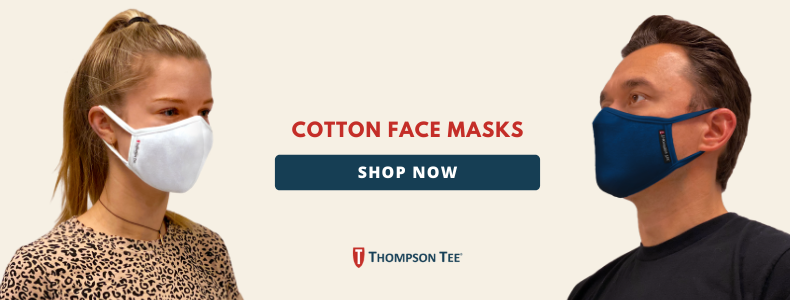7 Different Types of Face Masks Compared
Face masks have become household staples. But recent research has uncovered that not all face masks provide equal protection.
How effective is your face mask?
Different types of face masks have varying levels of effectiveness, so it’s important to know which masks are most — and least — protective.
In this article, we’ll compare 7 types of face masks to help you make an educated purchase decision for your health and safety.
7 Types of Face Masks Compared
Here’s what you need to know about each of the most common types of face masks:
1. N95
The N95 respirator sets the standard for masks in most health care and industrial settings. N95 masks filter out at least 95% of all airborne germs and particles — including viruses and bacteria.
They fit snug to your face with an adjustable nose piece to keep harmful substances from sneaking through any gaps.
N95 masks are also disposable, so it’s not recommended to reuse them.
Viruses can live on N95 masks for up to 7 days, so if you must reuse your mask, wait at least a week before your second usage.
N95 masks have been in low supply since the pandemic began, and the Centers for Disease Control and Prevention recommends reserving these masks for health care workers in hospitals and other facilities.
If you do wear an N95 mask, remember that fit is everything. Ensure you have the correct size mask for your face and that it forms an airtight seal against your skin.
2. KN95
The KN95 is the Chinese equal to the N95 respirator in the U.S. The two masks have the same filtration abilities — the primary difference is the certification requirements.
As supplies of N95 masks became scarce at the start of the pandemic, KN95 masks were imported as a substitute.
The KN95 mask is reusable under dire circumstances, similar to the N95, but experts recommend only one use. Certain sanitizing agents degrade the filtration efficiency of KN95 masks, so rotate your mask weekly if you plan to reuse it.
KN95 masks should form an airtight seal against your face; it’s important to wear the correct size. If you can feel air coming through the sides when breathing, you may need a different size.
3. Surgical Masks
You’ve seen surgical masks worn in hospitals and dental offices. They’re pleated, rectangular masks that loop behind the wearer’s ears.
Surgical masks shield against only large particles of liquid-like mists and sprays. They don’t always filter small droplets and particles of liquid that might result from a cough or sneeze.
Because surgical masks fit loosely, you also risk potential exposure to viruses and germs that could sneak out of the sides.
For the best results from a surgical mask, use it once before throwing out, and always aim for a snug fit.
To protect others from contamination, seal your used mask in a plastic bag before discarding it and don’t forget to wash your hands after.
Surgical masks are also in critical demand and best reserved for healthcare workers and medical first responders.
4. Face Shields
Initially developed for eye protection, face shields have been adapted to help stop the spread of COVID-19. The clear, flexible plastic shields are fastened with a headband to protect the nose and mouth.
Ideally, a face shield should extend from the top of your forehead to below your chin and wrap around your face.
Single-use and washable face shields exist, and some have hoods for added protection.
However, there’s not enough evidence that face shields effectively reduce or prevent the transmission of airborne viruses, so the CDC doesn’t currently recommend them.
Face shields can still offer some protection in situations where it isn’t practical to wear a mask.
To get the most out of a face shield, size it correctly to your face and disinfect it regularly.
5. Homemade Cloth Masks
Homemade cloth masks were popular in earlier days of the pandemic when masks were hard to find or completely unavailable.
Homemade cloth masks are reusable and washable, and they make sense when options for other types of mask are scarce.
Recent research has shown, however, that single-layer, homemade cloth masks are not effective at preventing the spread of respiratory viruses compared to other types of masks.
If a homemade mask is your only option, try adding an extra layer of fabric or folding in a clean paper towel that acts as a filter for more protection.
6. Bandanas and Neck Gaiters
Bandanas and neck gaiters are also a popular substitute for face masks due to their comfort and convenience.
However, neither is recommended for use as a protective mask.
In fact, the same study conducted on homemade cloth masks showed that neck gaiters could spread respiratory aerosols more than not wearing a mask at all.
The study did not compare how the material and shape of a neck gaiter affects its transmissibility, but it’s wise to aim for more layers and a snug fit when possible.
7. Layered Cotton Masks
Layered cotton masks provide the best protection, second only to N95-type respirators and KN95 masks. Plus, cotton masks are reusable and washable, making them a convenient option.
You can sanitize your cotton face mask with a spray of rubbing alcohol between uses and wash the mask in hot water and detergent for a deep clean.
Made from double-layered cotton, Thompson Tee’s face masks offer a safe and convenient option for adults and children.
Thompson Tee face masks are priced affordably at $5.99 and available in packages of six. Ensure that everyone in your family always has a clean mask handy!


